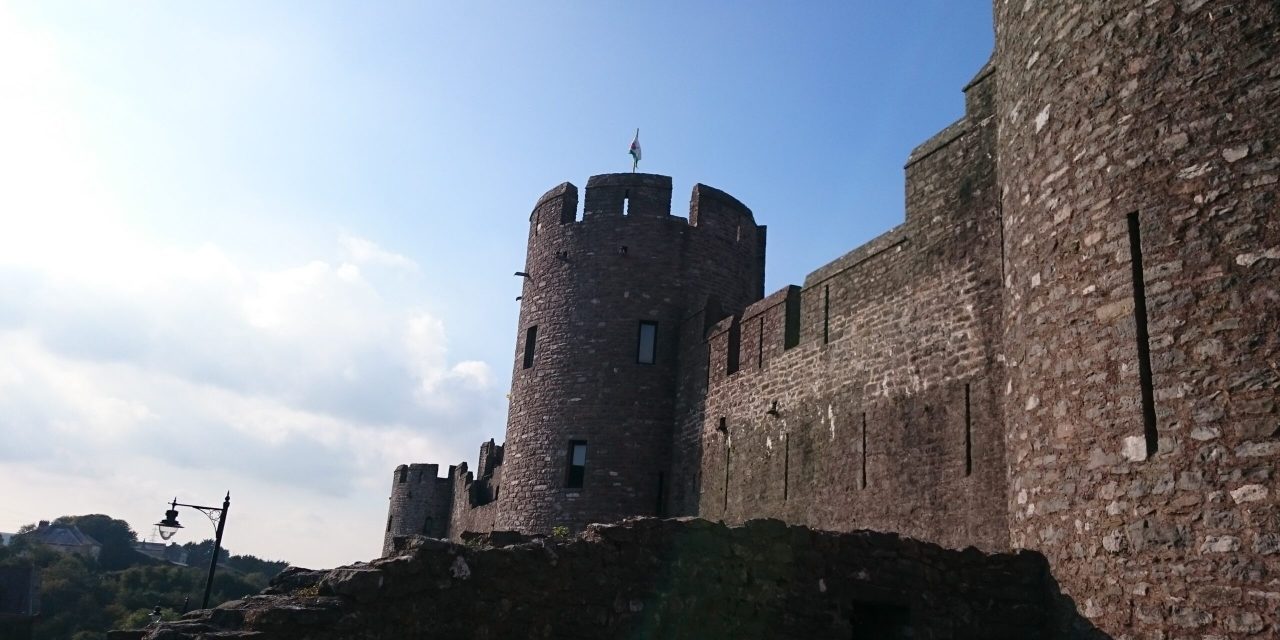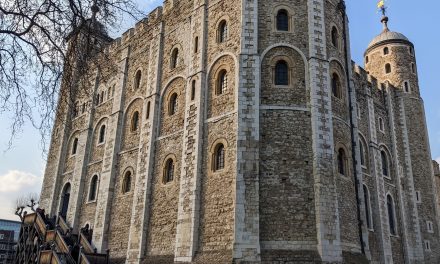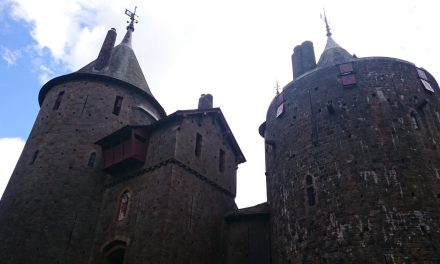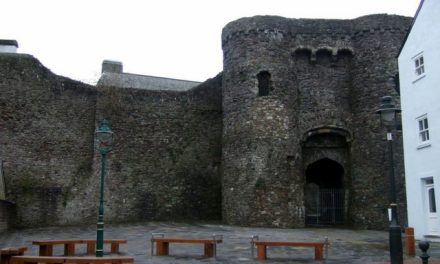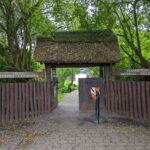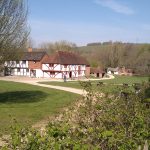If you love to go exploring the history that the castles in Wales have to offer, then you might be interested in learning more about Pembroke Castle. This is one of the most interesting castles in Wales, perhaps even in the UK, and it has great historical importance.
If you are planning on going to a castle that you have not visited before, then Pembroke Castle should definitely be on your list of castles that you want to see. There is plenty to see and do here, and it could make the perfect day out.
In this article, we are going to tell you everything that you need to know about Pembroke Castle, so you can find out exactly what to expect from your visit. We are also going to cover how much it costs to enter the castle and what you can find at Pembroke Castle, as well as some history about the castle itself.
What to expect from our article
- 1 Why is Pembroke Castle famous?
- 2 Is Pembroke Castle a ruin?
- 3 Where is the Pembroke Castle located?
- 4 How much are tickets for Pembroke Castle?
- 5 Can you go inside Pembroke Castle?
- 6 How long does it take to visit Pembroke Castle?
- 7 Is Pembroke Castle dog friendly?
- 8 Who Lived in Pembroke Castle?
- 9 When was the first version of Pembroke Castle built?
- 10 What was filmed at Pembroke Castle?
Why is Pembroke Castle famous?
Pembroke Castle is famous for being one of the finest castles in not only Wales, but the entirety of the UK. It is a testament to the wealth and prestige of the medieval Earls of Pembroke, and it highlights the importance of Pembroke itself throughout the medieval period. It is also famous for being the birthplace of Henry VII, who was the very first Tudor king.
Is Pembroke Castle a ruin?
Pembroke Castle has been a ruin for much of its time since it was originally built, and it remained as an ivy-covered ruin until 1880, when Mr J R Cobb of Brecon spent a whole 3 years trying to restore what he could of the castle. Nothing more was done until Major-General Sir Ivor Phillips of Cosheston Hill acquired possession of the ruins in 1928. It was at this time that he started an extensive restoration of the castle. He worked on restoring the walls and towers as close to their original appearance as possible.
Where is the Pembroke Castle located?
Pembroke Castle is a medieval castle that can be located in the centre of Pembroke, Pembrokeshire in Wales. You can find Pembroke Castle at 150 Gloucester Ave, London, NW1 8JA.
How much are tickets for Pembroke Castle?
Pembroke Castle offers relatively low prices for admission into the castle, and we will leave a price list below for you to look at.
Adults (16+) – £7.00
Seniors (65+) – £6.00
Children (3-15) – £6.00
Registered disabled or carer – £6.00
Children under the age of 3 – Free
Can you go inside Pembroke Castle?
Yes, you can go inside Pembroke Castle, and you can expect to see many fascinating parts of history here. You will be able to climb the 80ft Great Keep, explore the prehistoric caves on the grounds, and peer down to a prisoner in the medieval dungeon.
There are exhibition rooms that display models and weaponry, along with lots of information surrounding the history of the castle. You can even visit the room that King Henry VII himself was born in. During school holidays, there are also extra things to do, like witness a falconry display or historic re-enactment, as well as other types of family entertainment.
On your visit to Pembroke Castle, you can enjoy the exhibition rooms which portray life as it would have been through the many interesting twists and turns in the Castle’s history.
Gatehouse at Pembroke Castle
You will start your visit as you first walk through the gates of the castle, where you will be shown an introductory video. This video is designed to provide you with a brief summary of the history of the castle, as well as information about how it is used today.
Main Exhibition Rooms at Pembroke Castle
The main exhibition rooms can be found in the Gatehouse, and they combine a variety of sculpted figures, set work, mural paintings, graphic panels, lights, and a triggered audio sequence that aims to recreate some of the most important scenes from the castle’s history. You will even be able to see replica models of Pembroke Castle to highlight how the castle was constructed, and how it was developed over time.
You will be able to learn the story of the various Earls of Pembroke and their importance to both Welsh and British history, and transport yourself to a medieval banquet that was held at the household of William de Valence at Pembroke Castle.
As well as all of this, you will be presented with the opportunity to experience a dramatic exhibition that depicts the bloody battle that took place during the Civil War between Cromwell’s troops and John Poyer’s Pembroke Royalists. This includes the moment where John Poyer ultimately discovered his fate after his army was defeated in 1649.
Wogan’s Cavern
Underneath the castle is a vast cavern that is called The Wogan, and this is something that has been used for the last 12,000 years. The cave was actually a shelter for cave dwellers during both the Paleolithic and Mesolithic Periods, and potentially even the Bronze Age and during the Roman occupation of Britain.
The strategic placement of Pembroke meant that the castle and main doors’ departure point was to Ireland, and both Henry II and King John would have passed through its doors en route. The easy access by boat to the mouth of the cave also meant that it was the perfect storeroom and maybe even a boathouse throughout the Middle Ages.
During the 13th century, The Wogan was incorporated into the defences of the castle, and a large watergate was built across the mouth of the cavern. Today, The Wogan is one of the most impressive parts of Pembroke Castle, and it is even home to Pipistrelle bats.
The Great Keep at Pembroke Castle
The Great Keep started construction in 1204 by William Marshal. It is 80ft tall, and was originally 5 stories high. The Great Keep is unique in Britain in terms of its size and domed stone roof, and the ideas for the design were brought over from the continent. The original entrance would have been on the first floor, as it was constructed as a stronghold, in case the castle was ever attacked.
The entrance would have been through wooden steps that would have then been destroyed once everyone was inside, to ensure that attackers could not follow. The ground floor would have been used as a storeroom, and the 3 upper floors would have been living quarters. The top floor of the Great Keep was reserved for soldiers that would have had quick access to the roof, and this is where they would be able to attack the enemy below.
Today, the floors of the 5 stories are no longer in place, but you can look up to the domed roof and witness just how high the building is for yourself. If you are not afraid of heights, then you are also welcomed to climb to the top of the Keep, where you can experience an excellent view of Pembroke.
The Dungeon Tower at Pembroke Castle
The Dungeon Tower is located in the Castle’s Inner Ward, and it was built during the 13th century. Inside the dungeon, you are able to see one of the few remaining medieval gaols. The dungeon is in the form of an oubliette, which comes from the French ‘oublier’, which means ‘to forget’.
The only access to this basement dungeon would have been through a hatch in the floor, and this is where prisoners would have been thrown in and forgotten about. The only source of light would have come through a narrow slit in the east wall.
In 1440, Humphrey, the Duke of Gloucester and Earl of Pembroke, unfairly imprisoned John Whithorne in the tower so that he could gain control over his land on the Isle of Wight. There was a lack of food, clothing, and light in the dungeon, which led John Whithorne to go blind and suffer ‘other incurable ills’.
How long does it take to visit Pembroke Castle?
You can expect your visit to Pembroke Castle to last for at least 2 to 3 hours, but there is so much to see and do here that it may take longer.
Is Pembroke Castle dog friendly?
Yes, Pembroke Castle is a dog-friendly attraction, and visitors are permitted to bring their well-behaved dogs onto the grounds as long as they are on short leads. Dogs are allowed anywhere in the castle, apart from the café and shop. Dogs are welcome during regular daytime activities, but they are not permitted entry for after-hours or special events.
There are water bowls available and plenty of outdoor seating for people that do choose to bring their dogs with them. You should remember to pick up after your dog and ensure that you do not leave your dog tied or unattended.
Who Lived in Pembroke Castle?
The story of Pembroke Castle begins after the Norman Conquest, which was when Rhys ap Tewdwr, the Welsh ruler of the south-west, agreed on a truce with William the Conqueror. William had agreed to leave Tewder in peace, but when he died in 1093, Norman Roger de Montgomery, Earl of Shrewsbury, invaded.
Roger started to build Pembroke Castle soon after he gained control of the town, and when he died, his son, Arnulf, appointed a steward called Gerald de Windsor his estate. When Arnulf rebelled against the crown in 1102, Henry I seized Pembroke Castle and gave his mistress Nest in marriage to Gerald de Windsor, who, at this point, acted as the king’s steward.
King Stephen was Henry’s successor, and he granted Pembroke to Gilbert de Clare, who was then named the first Earl of Pembroke. However, Gilbert’s son, Richard, made Henry II angry, and the king seized Pembroke. He eventually relented, but Richard died without a male heir in 1176, so Henry made Richard’s daughter Isabel a royal ward.
Once Isabel had reached the age of 17, Henry granted her marriage to William Marshall, who was one of his most loyal supporters. William Marshal became the Earl of Pembroke and worked to transform the castle. Unfortunately, each of Marshall’s five sons inherited the castle in turn, but they all died without heirs.
The last of Marshall’s sons died in 1245, and in the late 13th century, William de Valence added new domestic quarters to the castle and began rebuilding the outer ward. His son, Aymer, built a perimeter wall that worked to enclose the borough.
After the golden age of Pembroke Castle in the 13th century, the castle gradually fell into decay. A French army besieged the castle in 1405 in aid of Owain Glyndwr’s rebellion. In 1475, Henry VI made his half-brother Jasper Tudor, the Earl of Pembroke. Tudor then brought Margaret Beaufort, the widowed wife of his brother Edmund, to Pembroke Castle.
At age 13, Margaret was pregnant by the time that Edmund had died, and she later gave birth to Henry VII at Pembroke castle.
When was the first version of Pembroke Castle built?
The first version of Pembroke Castle was built in 1093 by Earl Roger of Montgomery. The castle had a fairly basic structure of timber palisades, but the castle stood firm against Welsh counter-attacks.
What was filmed at Pembroke Castle?
Pembroke Castle has been used as a filming location for a variety of films. Some of these films include the 1968 film The Lion in Winter, the 1976 film Jabberwocky, the BBC adaptation of C.S. Lewis’s Prince Caspian, Shakespeare’s Richard II, and the 2016 romantic film Me Before You. It also features as the fictional Penleven Castle in the 2015 comedy film The Bad Education Movie.

